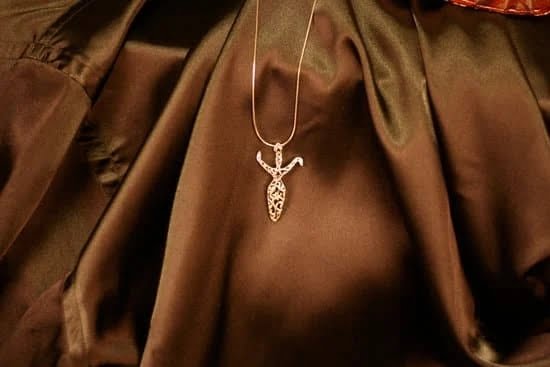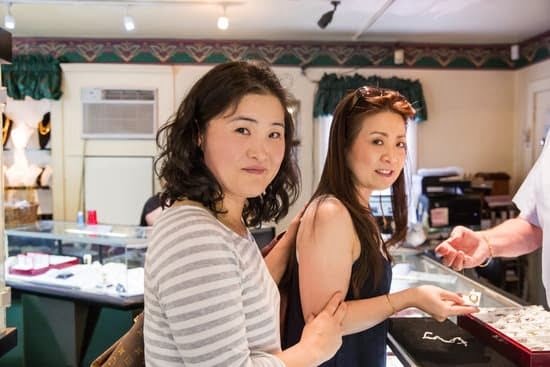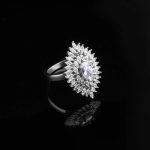The history of jewelry industry spans back centuries, with jewelry playing a significant role in different cultures and societies. From ancient times to the modern era, the art of jewelry making has evolved, influenced by various cultural, technological, and industrial factors. This section will provide a brief overview of the jewelry industry and its significance in different parts of the world.
Jewelry has been a part of human civilization since the early beginnings of society. The use of jewelry as adornment dates back to prehistoric times, with early humans using natural materials like shells, bones, and stones to create primitive forms of jewelry. Over time, the techniques and materials used in jewelry making have evolved significantly, reflecting advancements in craftsmanship, trade routes, and cultural exchange.
Throughout history, different cultures have played a pivotal role in shaping the jewelry industry. Each culture has contributed unique designs, materials, and techniques that have left an indelible mark on the world of jewelry. Iconic pieces from ancient civilizations such as Egypt, Greece, Rome, India, and China continue to inspire modern jewelry makers and collectors today. Understanding this rich tapestry of influences is essential for appreciating the diversity and beauty of jewelry throughout history.
Early Beginnings of Jewelry
The history of jewelry industry dates back to ancient times, with the earliest evidence of jewelry making dating back to over 100,000 years ago. From simple shell and bead necklaces to intricate metalwork and gemstone settings, early civilizations around the world engaged in the creation of adornments as a means of self-expression and cultural significance. The use of jewelry was not only limited to personal adornment but also had religious, social, and symbolic meanings for different cultures.
Some key points about the early beginnings of jewelry include:
- Use of natural materials such as shells, bone, and feathers by prehistoric humans
- Development of metalworking techniques by ancient civilizations such as the Egyptians, Greeks, and Mesopotamians
- Symbolism and religious significance attached to certain jewelry pieces in cultures like Ancient Egypt and Mesoamerica
The evolution of early jewelry making involved the use of various materials such as gold, silver, copper, and gemstones like lapis lazuli, turquoise, and jade. Techniques such as filigree work, granulation, and cloisonné enamel were developed by these ancient artisans. These early beginnings set the foundation for the intricate craftsmanship that would later define the history of jewelry industry across different eras and cultures.
Overall, the early beginnings of jewelry reveal a rich tapestry of creativity and craftsmanship that has transcended time and continues to influence contemporary designs in the modern era. From ancient amulets to elaborate royal regalia, the history of jewelry industry reflects both aesthetic beauty and cultural significance that have stood the test of time.
Evolution of Jewelry Making
The evolution of jewelry making has been a journey that spans thousands of years, and it has remarkably transformed in terms of techniques, materials, and designs. Here are some key points to understand the evolution of jewelry making:
- Techniques: From the ancient times when jewelry was handcrafted using primitive tools and methods, to the modern era where advanced machinery and technology have revolutionized the production process.
- Materials: Initially, jewelry was made from natural materials such as shells, stones, wood, and bones. However, with the passage of time, precious metals like gold and silver were discovered and became popular choices for creating exquisite pieces.
- Designs: The early forms of jewelry were simple adornments but as civilizations progressed, intricate designs began to emerge. With influences from different cultures around the world, unique styles in jewelry making became prevalent.
Throughout history, there have been significant shifts in how jewelry was created. These changes have played a crucial role in shaping the artistry and craftsmanship that is celebrated in today’s jewelry industry.
Not only have these transformations impacted the way we perceive and appreciate jewelry but they have also allowed for more diversity in design and greater accessibility for individuals across various social strata. As we continue to witness advancements in technology and innovative design trends, it is clear that the evolution of jewelry making is an ongoing process with endless possibilities.
Influence of Different Cultures
The history of jewelry industry is marked by the influence of different cultures from around the world. Each culture has its own unique traditions, symbols, and materials that have played a significant role in shaping the jewelry industry as we know it today. From ancient civilizations to modern societies, the impact of different cultures on jewelry making has been profound.
One of the earliest examples of cultural influence on jewelry making can be seen in ancient Egypt. The Egyptians were known for their intricate and symbolic jewelry designs, often using materials such as gold, lapis lazuli, and turquoise. These materials were not only prized for their beauty but also held deep cultural and religious significance. The use of symbolism in Egyptian jewelry, such as the Ankh or the Eye of Horus, continues to inspire modern jewelry designers.
Similarly, the Indian subcontinent has a rich history of jewelry making that dates back thousands of years. Traditional Indian jewelry designs are often characterized by intricate patterns, vibrant gemstones, and elaborate craftsmanship. The use of materials such as Kundan and Meenakari enameling has become synonymous with Indian jewelry making, reflecting the cultural beliefs and aesthetics of the region.
In addition to ancient civilizations, more recent cultural influences have also left their mark on the jewelry industry. For example, Native American tribes have a long-standing tradition of crafting silver and turquoise jewelry, which has gained popularity not only within Native American communities but also in mainstream fashion. The incorporation of traditional tribal motifs and techniques into contemporary designs has led to a resurgence of interest in Native American-inspired jewelry.
| Culture | Key Influence |
|---|---|
| Egyptian | Intricate symbolism using materials like gold and lapis lazuli |
| Indian | Intricate patterns with Kundan and Meenakari enameling |
| Native American | Influence through silver and turquoise with traditional tribal motifs |
Industrial Revolution and Mass Production
The Industrial Revolution marked a significant turning point in the history of jewelry industry. This era, which began in the late 18th century, brought about major changes in the way goods were produced, including jewelry. The use of new technologies and machinery revolutionized the methods of jewelry making, leading to the introduction of mass production.
Impact on Jewelry Making
The industrial revolution brought about a shift from traditional handcrafted techniques to mechanized processes in the jewelry industry. With the invention of steam-powered machinery and tools, manufacturers were able to produce jewelry at a much faster rate and with greater precision. This led to an increase in the availability of affordable jewelry for the masses, as well as a rise in demand for various types of accessories.
Introduction of Mass-Produced Jewelry
During this period, mass-produced jewelry became more prevalent due to technological advancements and improved production methods. This made it possible for consumers from all walks of life to access fashionable and trendy pieces at relatively lower prices. Additionally, mass production allowed for the creation of standardized designs that could be replicated on a larger scale, catering to a wider consumer base.
The industrial revolution had a profound impact on the jewelry industry, paving the way for modern manufacturing processes and shaping consumer preferences. This period marked a significant shift towards mass production and paved the way for the democratization of fashion accessories. It laid the groundwork for future advancements in technology and production techniques that continue to influence the jewelry industry today.
Jewelry Industry in the Modern Era
The jewelry industry has a rich and fascinating history, dating back thousands of years. From ancient civilizations to the modern era, the art of jewelry making has evolved significantly, influenced by different cultures, materials, and technologies. In this section, we will explore the current state of the jewelry industry, including the latest trends, innovations, and the impact of technology on jewelry making.
In the modern era, the jewelry industry has witnessed a surge in innovative designs and techniques. With advancements in technology, jewelers now have access to 3D printing, computer-aided design (CAD), and other cutting-edge tools that have revolutionized the way jewelry is created. This has led to a wave of contemporary and avant-garde designs that cater to changing consumer preferences.
Moreover, sustainability and ethical sourcing have become increasingly important in the modern jewelry industry. Consumers are now more conscious about where their jewelry comes from and how it is produced. As a result, many jewelers are prioritizing eco-friendly materials and ethical labor practices in their production processes.
Furthermore, online retailing has transformed the way consumers purchase jewelry. E-commerce platforms have made it easier for customers to browse through a wide array of options and make purchases from the comfort of their homes. The rise of social media influencers and digital marketing has also played a significant role in shaping consumer behavior within the industry.
| Jewelry Industry | Modern Era |
|---|---|
| Advancements in technology | 3D printing, computer-aided design (CAD) |
| Sustainability and ethical sourcing | Eco-friendly materials and ethical labor practices |
| Online retailing | Rise of e-commerce platforms |
Famous Jewelers and Jewelry Houses
The history of the jewelry industry is replete with famous jewelers and iconic jewelry houses that have made significant contributions to the evolution of this art form. These talented individuals and esteemed establishments have left an indelible mark on the industry, shaping trends and driving innovation. Let’s delve into the world of renowned jewelers and jewelry houses to explore their impact on the fascinating history of the jewelry industry.
Profiles of Influential Jewelers
Throughout history, there have been numerous influential jewelers whose craftsmanship and creativity have set them apart in the industry. From that illustrious list, names such as Louis Cartier, Harry Winston, and Bulgari immediately come to mind. These visionaries not only created exquisite pieces of jewelry but also played a pivotal role in defining the aesthetic sensibilities of their respective eras.
Legacy of Jewelry Houses
In addition to individual jewelers, several renowned jewelry houses have made a lasting impression on the industry. Tiffany & Co. Van Cleef & Arpels, and Chanel are just a few examples of houses that have become synonymous with luxury and style. Each house has its unique identity and design philosophy, contributing to the rich tapestry of the history of jewelry making.
Contributions to the Industry
These famous jewelers and jewelry houses have not only produced exceptional pieces but also pushed boundaries by experimenting with new materials, groundbreaking techniques, and innovative designs. Their work has influenced trends in fashion, red carpet events, and even popular culture. The legacy they have built continues to inspire new generations of designers and artisans in the modern era.
As we continue our exploration of the history of the jewelry industry, it becomes evident that these iconic figures and establishments have played an integral role in shaping its trajectory. Their craftsmanship, creativity, and dedication to excellence have undoubtedly left an enduring mark on this timeless art form.
Future of the Jewelry Industry
In conclusion, the history of the jewelry industry is a fascinating journey that reflects the evolution of human civilization. From its early beginnings with primitive materials and techniques to the influence of different cultures and the impact of the industrial revolution, the jewelry industry has continually adapted and innovated. As we look towards the future, it is evident that this trend will continue.
With advancements in technology, such as 3D printing and virtual reality, the jewelry industry is poised for further innovation and creativity. These new tools offer limitless possibilities for designers and artisans to create unique pieces that were previously unimaginable. Additionally, consumer trends are shifting towards sustainability and ethical sourcing, which will likely shape the future of jewelry production and design.
As we move forward, it is certain that the history of jewelry industry will be marked by continuous adaptation and evolution. From traditional craftsmanship to cutting-edge technologies, the world of jewelry making will always be influenced by the past as it looks towards a bright and exciting future. As new generations of designers and consumers continue to shape the industry, one thing remains constant – the enduring allure and significance of jewelry in human culture.
Frequently Asked Questions
When Did the Jewelry Industry Start?
The jewelry industry has a long history, dating back to ancient civilizations such as Egypt, Mesopotamia, and India. These early societies created intricate jewelry pieces using precious metals, gemstones, and other materials.
What Is the History and Origin of Jewellery?
Jewelry has been a significant form of adornment for thousands of years. The earliest known jewelry pieces were made from shells, bones, and stones. As civilizations developed, so did the art of jewelry-making, with techniques and styles evolving over time.
How Did Jewelry Change Over Time?
Over time, jewelry has evolved in terms of materials used, designs created, and its significance in society. From simple adornments made from natural materials to elaborate pieces crafted with precious metals and gemstones, jewelry has reflected the cultural and artistic trends of different eras around the world.
Furthermore, the role of jewelry in society has also changed – from being used as a symbol of power or wealth to being a means of personal expression and sentimentality.

Welcome to my jewelry blog! My name is Sarah and I am the owner of this blog.
I love making jewelry and sharing my creations with others.
So whether you’re someone who loves wearing jewelry yourself or simply enjoys learning about it, be sure to check out my blog for insightful posts on everything related to this exciting topic!





